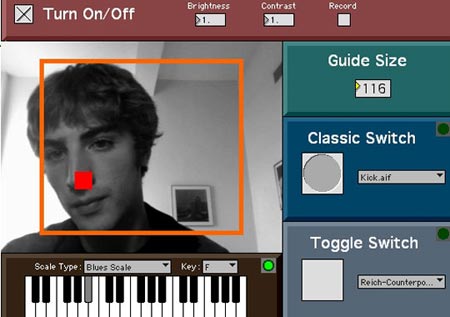Play music with the nose
An electronic device that allows playing music with the tip of the brain will help those with cerebral palsy have the opportunity to enjoy and create music. The program not only helps people interact with music but can also be used to communicate, help disabled people with the ability to create complete sentences, instead of just giving "Yes" or " yes" answers. Is not".
"This device will bring voice to people who are often alienated due to physical defects , " said Zane Van Dusen, a computer science researcher at Rensselaer General Institute in New York, USA. Van Dusen developed the program with Pauline Oliveros, a musician and art expert at Rensselaer.
Cerebral palsy is a neurological disorder that permanently reduces the coordination between muscles. So people with this condition often feel like being imprisoned for not being able to speak or move. Music offers a way to break down barriers because it helps the sick person to express themselves. However, the current musical instruments are still limited. Most of them only include a wheelchair-connected joystick, which is expensive to repair and comes with many wires that make it difficult for users to create.
Van Dusen's tool has overcome these obstacles with an inexpensive webcam and specialized computer software.

(Photo: Discovery)
A person sitting in front of a computer screen sees his face through a webcam. Motion tracking software will place a small red square on the tip of the user and follow the person's movement on the fretboard displayed on the screen. The low notes will be on the left side of the keyboard and the high notes on the right. A rectangular frame on the face will transform according to the music that person creates.
For example, the rectangle will be big or narrow to fit with the movement of the patient. Under the fretboard mode, the user will keep the face in the rectangle, and touch the keys to create the note. In beating mode, the person can move out of the rectangular frame to create the sound of a drum or cymbal.
In a pilot study at Rehabs Program in Poughkeepsie, New York, children using this device focused more on their movements because they were interested in the sound produced.
"The added benefit of it is that children also learn how to control their minds. In addition, its price is not high and can be adjusted to communicate," said Leaf Miller professor of music at Rehabs Program. .
Researchers will continue to edit to perfect the product and hope to help patients play music through the tip.
MT
- Costumes play music
- Music improves children's learning ability
- Music path: Here you will play music with your own car
- Bicycles never get stolen, play music ...
- Play music to 'refine' your hearing system
- Listening to music online can make climate change?
- Apple continues to dominate the music player market
- Psychology of music
- Sony introduced the robot music player
- Detection of hairy pig nose mice in the longest
- The science explains why our nose is flat, the western tip is high
- Why is the Vietnamese nose low but the Westerners are high?
 Green tea cleans teeth better than mouthwash?
Green tea cleans teeth better than mouthwash? Death kiss: This is why you should not let anyone kiss your baby's lips
Death kiss: This is why you should not let anyone kiss your baby's lips What is salmonellosis?
What is salmonellosis? Caution should be exercised when using aloe vera through eating and drinking
Caution should be exercised when using aloe vera through eating and drinking